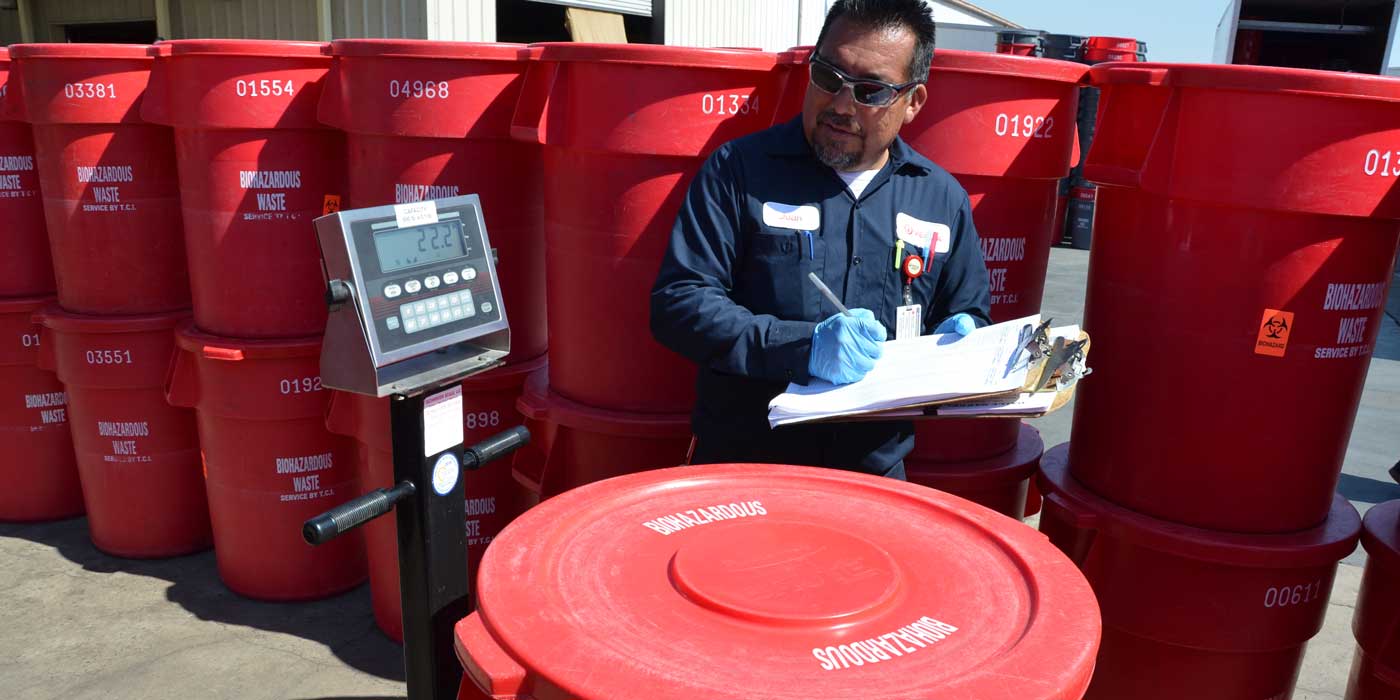Recognizing the Different Kinds Of Garbage Disposal Strategies
In the realm of waste monitoring, the array of disposal techniques offered today is substantial and differed, each method offering an unique function in resolving the difficulty of garbage disposal. click here. From reusing methods that aim to offer brand-new life to products, to the intricate processes of contaminated materials monitoring, the landscape of waste disposal is complicated yet vital for ecological sustainability. Comprehending the subtleties of these various techniques not only clarifies the value of liable waste management however additionally prompts us to rethink our method towards waste disposal in a quickly progressing world

Recycling Techniques
Reusing methods are crucial for lasting waste administration practices in both household and industrial settings. medical waste removal. By applying effective recycling strategies, a substantial amount of waste can be drawn away from landfills, preserving natural sources and decreasing the ecological impact of manufacturing processes
In suburbs, curbside recycling programs play a crucial duty in encouraging houses to separate recyclable products from general waste. Products such as paper, plastics, glass, and metals can be arranged and collected for handling right into new items, reducing the need for resources and energy-intensive production processes.
Industrial centers additionally depend on reusing methods to lessen waste generation and promote a circular economic situation. By executing closed-loop systems, organizations can reuse materials within their manufacturing processes, minimizing costs and environmental footprint. medical waste disposal. Additionally, industrial recycling programs usually entail partnerships with specialized recycling centers to make certain that products are properly sorted, processed, and rehabilitated into the supply chain
Composting Methods

Oxygenated static heap composting includes mixing natural waste materials in a large stack and regularly transforming it to make sure proper oygenation. This technique is efficient for massive composting operations. On the various other hand, vermicomposting uses earthworms to break down raw material into nutrient-rich castings. This strategy is appropriate for smaller-scale procedures and houses.
In-vessel composting entails placing natural waste in a shut container with controlled problems for temperature level and oygenation. This approach works for managing food waste in city areas. Windrow composting consists of forming long rows of natural waste and frequently transforming them to promote decomposition. This method is generally used in agricultural setups.
Landfill Disposal
Garbage dump disposal is a generally made use of technique for handling waste that can not be recycled or composted. Methane gas, a byproduct of decomposing natural waste in land fills, is usually gathered and used as a resource of eco-friendly power. Efforts to reduce dependence on landfills include advertising waste decrease, recycling, and discovering different waste disposal techniques to reduce the environmental impact linked with standard garbage dump disposal methods.

Waste-to-Energy Incineration
Incineration of waste for power generation is a technique increasingly being taken into consideration as an option to typical landfill disposal methods. Waste-to-energy incineration entails the combustion of waste materials at heats, typically in specialized centers designed to generate electrical energy or heat through the process - click here. This technique not only lowers the volume of waste that would certainly or else be destined for garbage dumps yet also takes advantage of the heat created throughout incineration to create energy
One of the vital advantages of waste-to-energy incineration is its ability to produce electricity while lessening the ecological influence compared to traditional garbage dump disposal approaches. By converting waste into energy, this strategy aids in minimizing greenhouse gas emissions and dependence on nonrenewable fuel sources for energy generation. Additionally, waste-to-energy facilities are furnished with innovative air contamination control technologies to reduce prospective environmental contaminants launched throughout the burning procedure.
Hazardous Waste Administration
.jpg)
Considering the crucial significance of responsible waste management techniques, specifically in the world of ecological sustainability, the emphasis currently moves towards the intricate domain name of Contaminated materials Administration. Contaminated materials poses considerable dangers to both human health and wellness and the environment, demanding customized handling and disposal methods. Common instances of contaminated materials include chemicals, batteries, pesticides, and digital waste.
Harmful Waste Management entails the recognition, collection, transportation, therapy, and disposal of materials deemed potentially unsafe or dangerous. This process calls for adherence to stringent regulations and standards to mitigate damaging effect on ecosystems and public wellness. Different approaches are utilized in managing contaminated materials, including recycling, safe landfills, encapsulation, and chemical therapy.
Proper Contaminated Materials Management is critical for stopping contamination of dirt, water sources, and air contamination. It is important for markets, labs, medical care centers, and various other generators of dangerous waste to apply robust administration approaches, training programs, and emergency action intends to ensure the risk-free handling and disposal of these products. Failing to manage contaminated materials suitably can have navigate to these guys far-reaching repercussions, emphasizing the importance of thorough and liable methods in this area.
Verdict
In verdict, waste disposal strategies play a crucial function in managing and minimizing the impact of waste on the environment. It is vital for markets and individuals to understand the various waste disposal methods offered and choose the most appropriate approach for lasting waste monitoring.
In the realm of waste management, the array of disposal strategies offered today is large and varied, each approach serving a distinct function in attending to the challenge of waste disposal. click here. From reusing approaches that intend to provide new life to materials, to the elaborate processes of hazardous waste monitoring, the landscape of waste disposal is complicated yet important for environmental sustainability. Understanding the subtleties of these different techniques not only loses light on the value of accountable waste management yet likewise prompts us to reassess our technique towards waste disposal in a swiftly developing globe
Efforts to decrease dependence on garbage dumps include advertising waste reduction, reusing, and exploring different waste disposal methods to minimize the ecological footprint connected with traditional land fill disposal practices.
It is vital for individuals and sectors to comprehend the various waste disposal methods readily available and select the most ideal technique for lasting waste management.